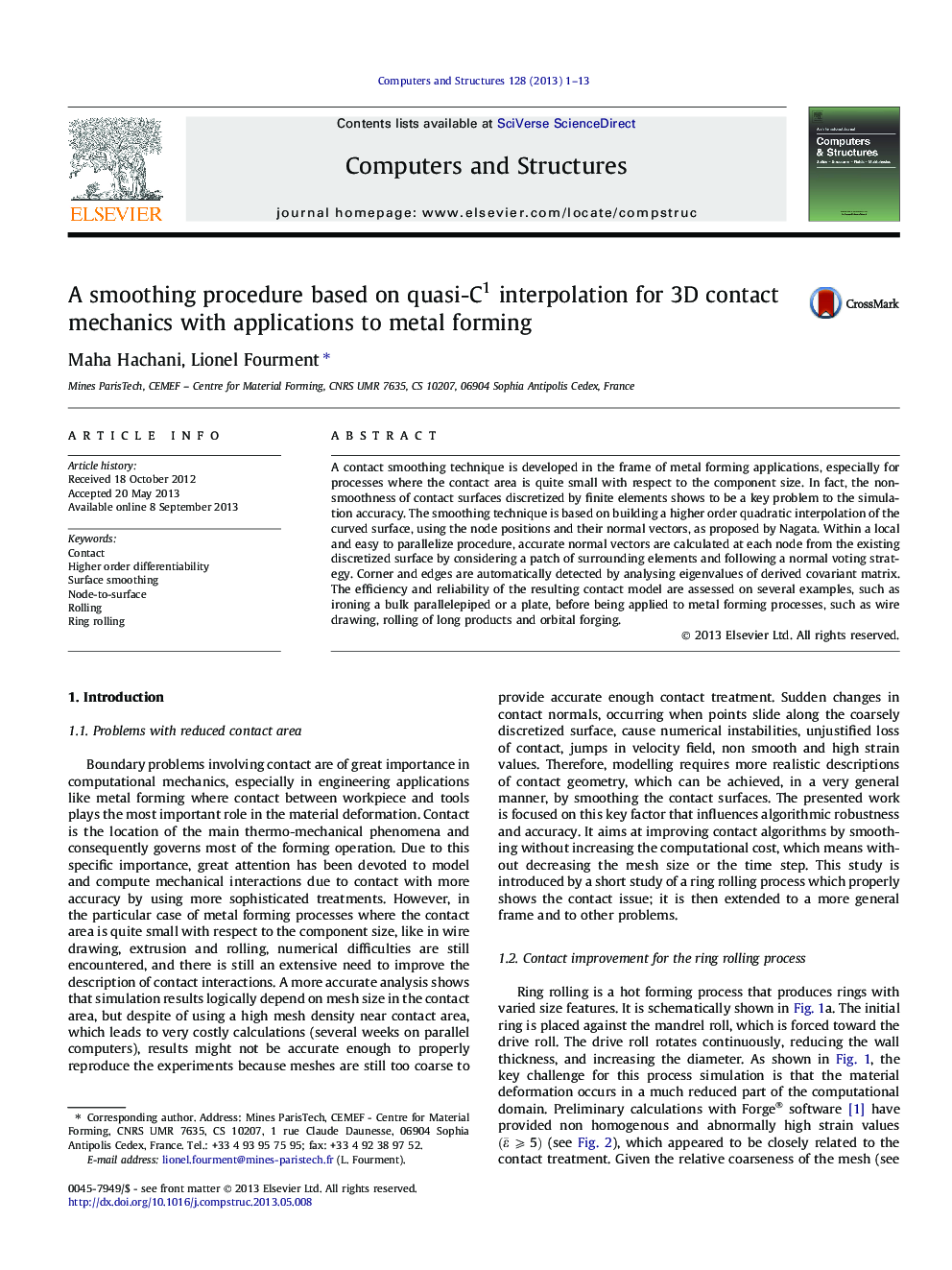| Article ID | Journal | Published Year | Pages | File Type |
|---|---|---|---|---|
| 511124 | Computers & Structures | 2013 | 13 Pages |
•Contact is improved by smoothing the basic facetization of complex 3D obstacles.•Quasi-C1 approximation of surfaces are obtained.•Accurate calculation of normals by a Computer Graphics techniques is necessary•Resulting contact algorithm is both more accurate and more efficient.•Quite significantly enhanced results are obtained in metal forming simulations.
A contact smoothing technique is developed in the frame of metal forming applications, especially for processes where the contact area is quite small with respect to the component size. In fact, the non-smoothness of contact surfaces discretized by finite elements shows to be a key problem to the simulation accuracy. The smoothing technique is based on building a higher order quadratic interpolation of the curved surface, using the node positions and their normal vectors, as proposed by Nagata. Within a local and easy to parallelize procedure, accurate normal vectors are calculated at each node from the existing discretized surface by considering a patch of surrounding elements and following a normal voting strategy. Corner and edges are automatically detected by analysing eigenvalues of derived covariant matrix. The efficiency and reliability of the resulting contact model are assessed on several examples, such as ironing a bulk parallelepiped or a plate, before being applied to metal forming processes, such as wire drawing, rolling of long products and orbital forging.
